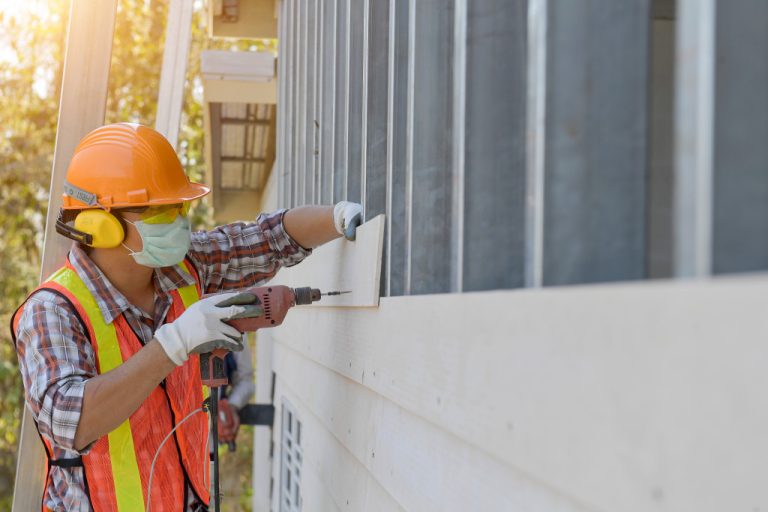Insulation should be a major part of the consideration if a homeowner is interested in increasing their property value. Insulation can help maintain a comfortable home temperature and reduce energy costs for homeowners by limiting how much energy is wasted. It also supports better air quality throughout the home, reducing potential health risks associated with overly humid or drafty environments.
Installing insulation can help significantly boost house value since buyers are constantly looking for well-insulated homes that don’t require costly repair work down the line. If you plan to sell your home in the future, this investment can make your property stand out from other listings and increase its worth before it even hits the market.
But how do you incorporate insulation into your home design? Here are a few clever ways to do just that:
Walls
Insulating your walls can help you make your home more energy-efficient, economical, and comfortable. It’s relatively simple to do yourself, but there are a few things to remember before you start.
Firstly, check what type of insulation is suitable for the type of wall construction in your home – things like stud construction and cavity walls need different types. Once you know this, measure up the area that needs insulating and choose the product and materials needed. This could include foam board insulation, spray foam, or mineral wool insulatio batts or rolls. When the job is completed, you will also need some weatherproof tape to seal around outlets and other penetrations. Finally, once you have insulated the space between the studs, apply a vapor barrier film over it and appropriate fasteners to hold it all in place.
Windows
Ensuring that your windows are properly insulated is key to keeping your home energy efficient. The best way to do this is by using insulation film, which requires no changes to the existing window frame and can be applied easily.
Using a blow dryer to heat up the adhesive backing, you can install the film indoors on your windows’ frames in minutes. It’s important to ensure that all edges are sealed off so that cold air doesn’t seep in – if necessary, use caulk or foam sealant to fill any gaps along the edge. Remember, once installed, the insulation from these films will keep your windows sealed tightly for years, preventing drafts and unwanted heat loss.
Doors
Adding insulation to doors is an easy and quick way to significantly improve the thermal performance of any home. Many people are unaware of how much energy is lost through uninsulated doorways, leading to higher energy bills and uncomfortable indoor temperatures. Fortunately, installing door insulation is simple and easy, with minimal supplies and instructions.
Measure your doorway first, then purchase the appropriate roll or sheet of insulation. You’ll typically have several materials from which to choose. Now that you have your insulation, properly secure it in place following the instructions included with your product. This will ensure that its maximum energy efficiency rating is achieved.
Roofing

If you’re looking for an efficient way to incorporate insulation into your home design, consider installing insulated roofing. Insulated roofing materials come in various styles and colors, so you can find something that will fit the look of your home while still providing excellent protection from heat loss.
If you’re planning to have insulated roofing, make sure to include your patio as well. Patios are often overlooked when it comes to insulation, but they can have a major impact on temperatures by trapping heat and cold air. Consider calling a patio roofing service provider who can install insulated roofing systems for your patio, helping you keep the temperature at a comfortable level all year round.
Attic
Insulating your attic may seem daunting, but when done properly, it can lead to tremendous energy savings and increased comfort in your home. It’s important to choose the right materials for this job, such as blankets or rolls of insulation, or spray foam insulation. Blankets and rolls of insulation should be placed between the joists in your attic floor. The material should cover the entire surface.
To get an effective seal, cut pieces of insulation to fit into smaller spaces. Spray foam insulation is great for covering up cracks around vents, ductwork, and other small areas. After installing any type of insulation, double-check that all seams and gaps are completely blocked. This will prevent warm air from escaping through them during wintertime.
You can incorporate insulation into your home design to maximize energy efficiency and reduce heating and cooling costs over time. From installing insulated roofing materials to adding insulation around doors and windows, there are plenty of options available to ensure your family stays warm during those cold winter nights! With these clever tips, you should have no problem finding a way to add extra insulation to your home design.
